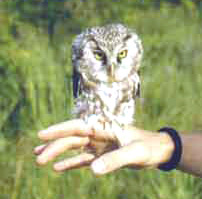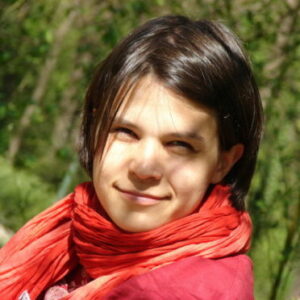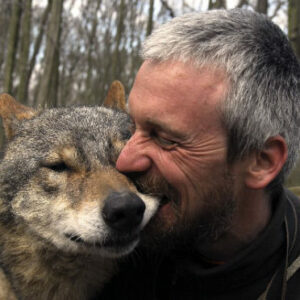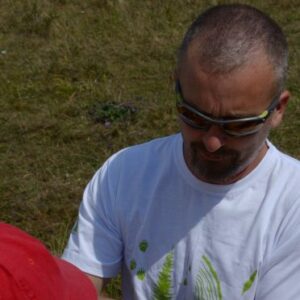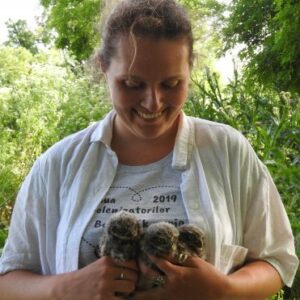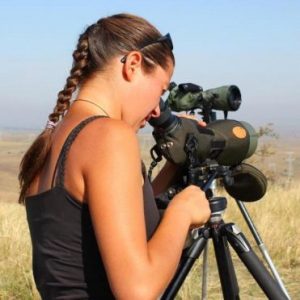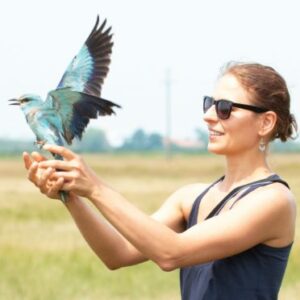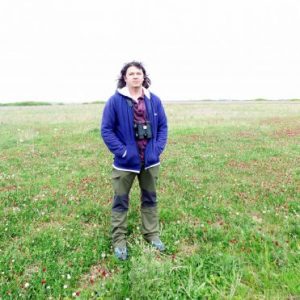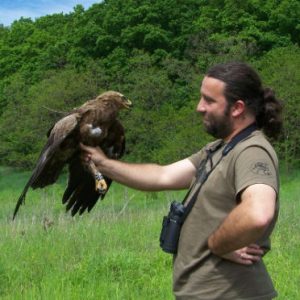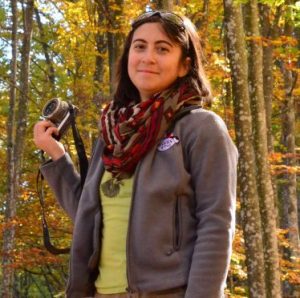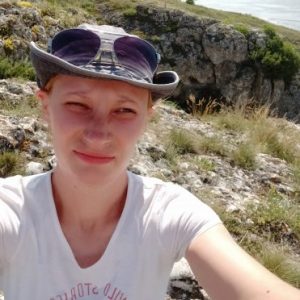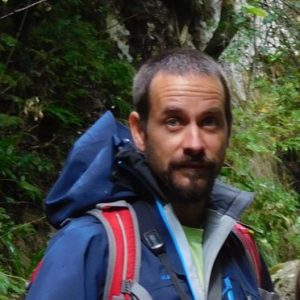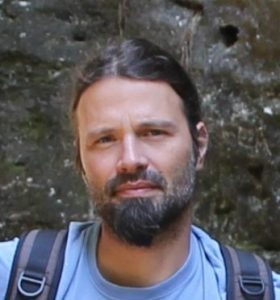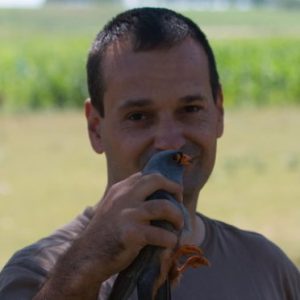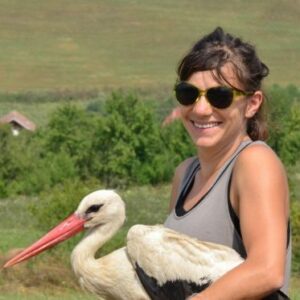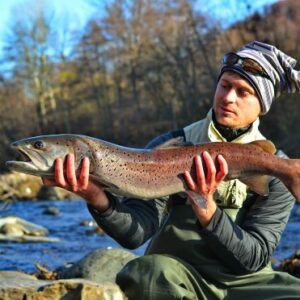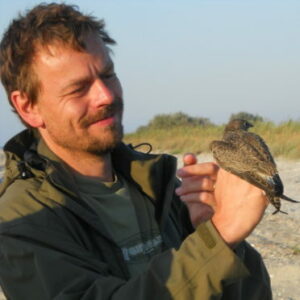Our ringing camps:
Chituc Ringing Camp Bird migration has fascinated mankind since the ancient times, but the study of this phenomenon began just over a century ago. Europe is crossed by two major migratory pathways: the East Atlantic flyway is used by the birds of East Canada, Greenland and Western Europe that pass to Africa through the Strait of Gibraltar, and the Pontic-Mediterranean flyway which gathers the birds of Central and Eastern Europe and the western part of Asia. Songbirds usually do not fly over large water bodies, so many of them avoid crossing the Black Sea passing through Romania. Chituc is a sandy lagoon-spit located between Lake Sinoe and the sea, south of the Danube Delta, and is one of the last wild beach segments in the country. Due to the NE-SW orientation and its position between two large waterbodies, the spit acts as a bottle-neck for migrating birds. Due to the strictly protected area status within the Danube Delta Biosphere Reserve, the reduced human impact allows shorebirds to feed undisturbed throughout the migration. The reedbed around the spit provides protection and a permanent food source for migratory bird species. 1996-1997 The first ringing camps on the Chituc spit were organized by Milvus Group in 1996 and 1997. In the first year, after 63 days of consecutive ringing we caught 3625 birds. Among the 73 species we also caught a Pallas’s Leaf Warbler (Phylloscopus proregulus) and a Greenish Warbler (Phylloscopus trochiloides). These were the first records of these two species in Romania. Motivated by the success of the previous year, in 1997 we increased the number of days to 92, spanning from the 2nd of August until 1st of November. Thus, we managed to catch 5715 birds belonging to 96 species. Among these was also a Desert Warbler (Sylvia nana), which to this day is the only observation of the species in our country. Being a grassroot organization, we couldn’t continue the ringing in 1998, but with the total of 9340 banded birds in two years, the Chituc Ringing Camp became one of the best camps in Romania. From 2014 onwards In 2014 we decided to return to the spit to assess the autumn migration dynamics of different species and monitor populational changes in migratory birds. Since the ornithological nets are mounted yearly in the same places, the standardized configuration allows the comparison of annual catches, which in the long run will lead to population trend information. The ringing camp on Chituc spit is the largest camp of its kind in Romania, which excels both in the number of marked species and in the number of individually marked birds. The camp is becoming more and more popular at an European level, being visited annually by ornithologists from abroad. Village of Glodeni Between 2008-2012, from August to September, the ringing was done twice a week. We captured 5,000 birds. Retezat Mountains, Gura Zlata The camp was organised in 2005. Only 447 birds were trapped and banded here. Village of Sic the main objective of the camp in Sic, during its two-year existence (2003-2004) was banding typical reed species. A total of 6,500 birds were ringed. Gurghiu Mountains ringing camp The Gurghiu Mountains High Camp was organized between 1994-2002, and it was the first high mountain camp in Romania.The main goals of this project were:
– study of the local bird population; – on-site education of schoolchildren and young conservationist.In year 1993 we organised a first pilot camp in order to discover the best place for setting up our campsite and equipment. The lodging was in a small cabin provided by the Forestry Office of Sovata town. During the years we improved the living conditions and totally reconstructed the roof of the house. The duration of the project was set for two months, between July and September. The reasons we chose this period of the year were that we wanted to identify the breeding birds without disturbing them during incubation and chick rearing, to identify the migrating birds in the area and finally because weather conditions are not suitable in the rest of the year.
The campsite
The study area is situated in the Oriental Carpathians, the Gurghiu Mountains belonging to the volcanic mountain chain in the western side of the Carpathians. In North the Mures River separates them from the Calimani Mountains and the southern boundaries are the Harghita Mountains and Tirnava River Valley. The Gurghiu Mountains are not really high mountains but the most forested, its highest peak being just 1776m. Because the peaks are exposed to the humid westerly winds, the average rainfall is about 1200mm, with average temperature of 4C. The Durgo Lodge is located in a re-planted opening in a natural coniferous forest at bout 1500m above sea level. The access to the campsite is possible in two stages: – first, one must follow the forestry road from Sovata (accessible with vehicles) along the Sebes Creek; after a while (3/4 of the journey) the road will leave the valley climbing up to the stone quarry, this road is about 15km and there are signs posted that will direct you to the site; – second, a 1,5km walk from the stone quarry following the marked (white/red/white stripes) footpath across forest and openings; this is quite a climb and the access is possible only by feet; The camp is running on self-catering bases but it is up to the participants and camp leader to organise food and supplies. Cooking is on open fire and every participant must supply its own camping gear. Because lodging is limited and we try to keep human disturbance at minimum levels during our project, numbers of participants are limited to a daily maximum of 12-15 people. If you would like to participate, please check with us previously!
Study methods For studying bird population at the selected area we used the individual marking method and field observation. For the individual marking we caught the birds with Japanese type mistnets, set up in four different type of environment: closed canopy forest, spring, forest edge and recently planted openings. The Romanian Ringing Centre’s aluminium rings were fitted on the birds’ legs and several biometrics data (wing formula, weight, condition, moult, and parasites) were collected. This operation – made by a qualified ringer with a RRC license – takes just a few seconds and every bird is released as soon as possible. To be able to compare data from different years mistnets were used each year at the same location, although the quality and number of the nets had slightly changed over the years. Between 1994-2002 more than 6500 birds were individually marked. During the study period of each year, several field observations were made. The observers followed the same route, recording the species and numbers of individuals. Daily records of the observed species were also recorded in the camp’s log.